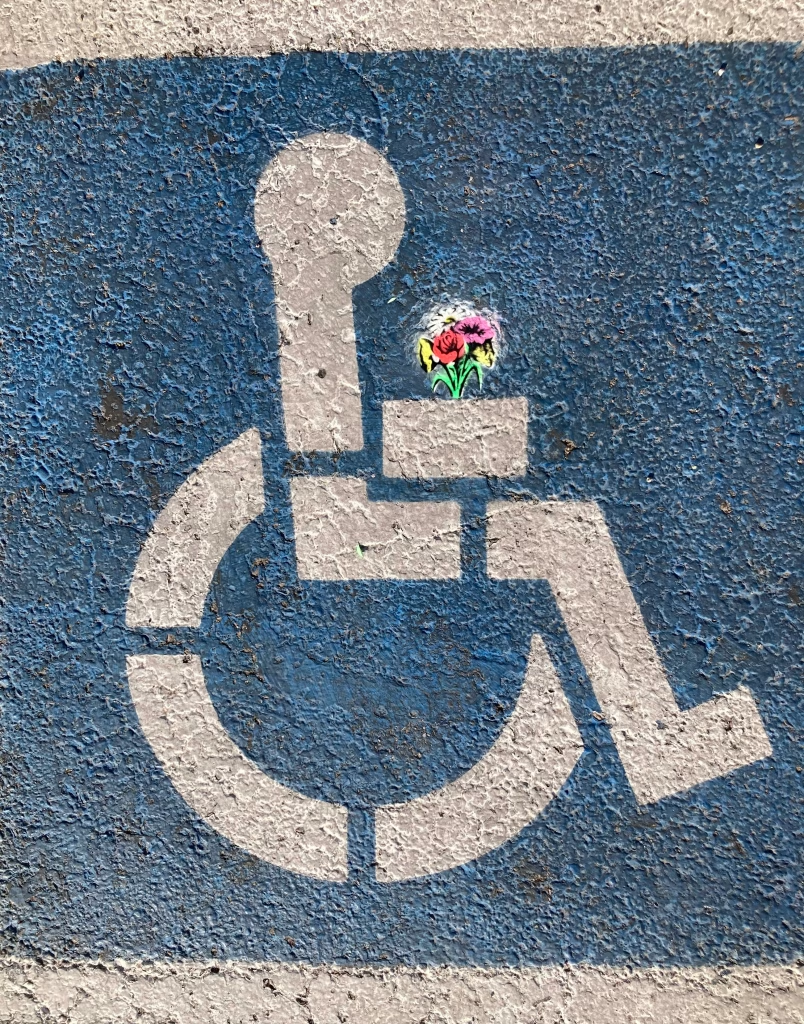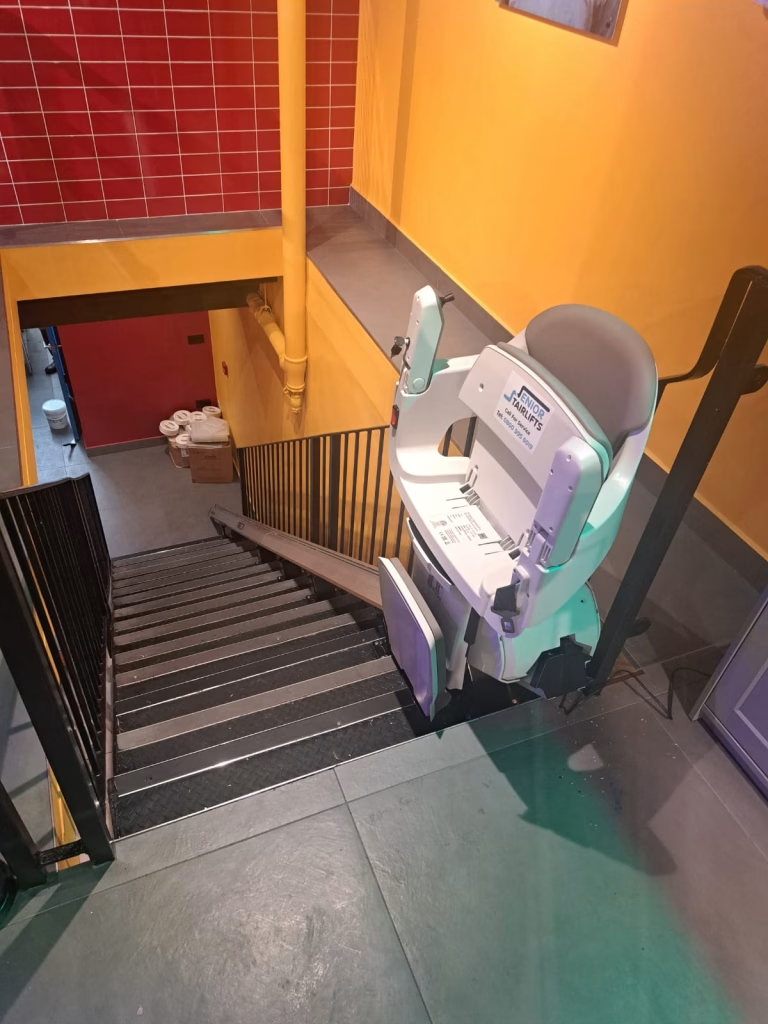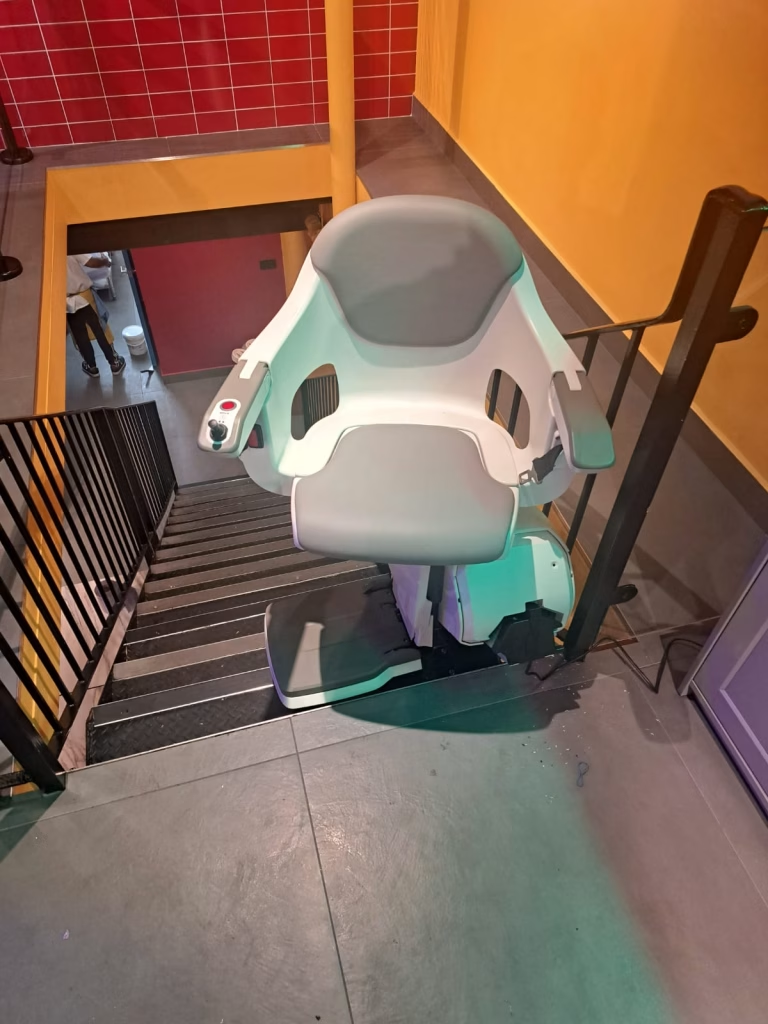Public Accessibility in the UK: Creating Inclusive Spaces for Everyone

Table of Contents
Mobility Challenges Extend Beyond the Home
Stairlifts and mobility products focus on addressing mobility challenges within the home. However, these challenges also extend to areas outside the house. Many public places will have stairs or even slopes that will make mobility difficult.
This blog will discuss public accessibility and mobility challenges in public spaces and how they are handled.
Why Public Accessibility Needs to Be Prioritised
Public places like thatres, churches, and community centres are important spaces where people come together to connect, learn, and share. However, these places are sometimes hard to access or unwelcoming for those with limited mobility.
Making public spaces accessible isn’t just about following the rules. It’s about making sure everyone feels included, respected, and independent.
When venues add stairlifts or other mobility aids, they show that every visitor matters and deserves the same chance to participate. Accessibility isnt a luxury; it’s something everyone should have. And it doesnt just help with disabilities. It also helps older adults, families with young children, people recovering from injuries, and anyone with trouble getting around.
In short, prioritising accessibility makes public accessibility more welcoming for all.
The Benefits of Accessibility for Businesses
Making public spaces accessible isn’t only important for people with disabilities; it also benefits businesses. When venues are easily accessible, they attract more customers, such as older adults, families with young children, and people recovering from injuries.
By investing in accessibility features like ramps, stairlifts, and automatic doors, businesses can create a welcoming environment for everyone. This helps build a positive reputation, encourages repeat visits, and can increase overall sales. Simply put, accessibility is good for customers and great for business.
Here at Senior Stairlifts, we can offer commercial stairlifts for businesses, companies, and venues.
Common Mobility Barriers in Public Spaces
Even though more people understand accessibility needs, many public places are still difficult for those with limited mobility to get around. One major problem is stairs without ramps or stairlifts, which make it hard to move between floors. Narrow doorways, tight hallways, and heavy doors that aren’t automatic can also make it difficult for wheelchair or scooter users.
Another frequent obstacle is the lack of grab bars, accessible layouts, or enough restroom space. Uneven flooring and inadequate lighting make trips and falls more likely.
Identifying and addressing these barriers is the first step toward creating inclusive public environments.
How Public Places are Becoming More Accessible
Public spaces are beginning to understand the importance of creating welcoming spaces for all people, regardless of mobility issues. To help all guests take part in events, many theatres and concert halls are renovating their venues with stairlifts, ramps, and lifts. To make worship sessions more accessible to the elderly and disabled, churches and other places of worship are building handrails and lifts.
Community centres and recreational facilities are also making improvements, such as adding marked accessible paths, smooth floors for easier movement, and wide automatic doors. To further promote diversity, some are even implementing assistive devices, such as visual aids and hearing loops.
Stairlifts and Other Mobility Solutions in Restaurants
Everyone should be able to enjoy eating out, but many restaurants have physical barriers that limit mobility. Stairs to dining areas, upper floors, or restrooms can make it very hard for people with mobility issues to enjoy the experience fully. Stairlifts offer a helpful solution by providing a safe and easy way to move between floors. Therefore, allowing restaurants to accommodate guests with different mobility needs better.
Many businesses are adding mobility solutions, such as wheelchair ramps, automatic doors, and seating, in addition to stairlifts. Some forward-thinking restaurants are even redesigning their spaces to ensure level entrances and plenty of room.
Real-Life Success Stories: Mobility Solutions Making a Difference
Earlier this year, we had the privilege of enhancing public accessibility! With the help if AccessBDD Homeglide, customers at Vasiniko London can now easily navigate the stairs and enjoy their pizza.
Here are a few photos from the installation!


The Role of Regulations and Public Accessibility Standards
Public spaces in the UK must follow laws that ensure accessibility for everyone. The Equality Act 2010 is the main law behind this. It requires places like theatres, restaurants, and community centres to make “reasonable adjustments” to remove or reduce barriers. This can include adding accessible restrooms, wide doorways, ramps, and stairlifts.
In addition, Building Regulations Part M sets specific rules for new buildings and major renovations. These cover details like the slope of ramps and the size of accessible parking spaces.
Conclusion: Public Accessibility for Everyone
The goal of public accessibility is to create an environment in which all people, regardless of age or mobility level, may participate fully. This goes beyond simply constructing stairlifts or ramps.
People with restricted mobility have difficulties at their front doors and in restaurants, theatres, churches, community centres, and other public spaces that are essential to our communities. We promote a more inclusive society for all by recognising and resolving these issues.
Success examples, such as our Vasiniko London installation, remind us that constructive change is workable and significant. By sharing these examples, we encourage more public areas to use inclusive solutions.
Creating inclusive spaces involves more than providing physical access. It also entails ensuring that each person feels appreciated, accepted, and able to participate in the community. Let’s work together to create a future where everyone has true public accessibility, which is the rule rather than the exception.
If you are a business looking for a stairlift for your commercial property, get in contact with our team now.